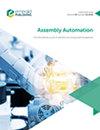汽车装配线手动拧紧操作的故障风险评估
IF 1.7
4区 计算机科学
Q3 AUTOMATION & CONTROL SYSTEMS
引用次数: 0
摘要
目的拧紧操作是汽车装配线上最关键的操作之一,直接影响到客户的安全。本研究旨在评估手动拧紧操作的主要复杂性驱动因素,与实际拧紧失效数据相关联,并提出缓解措施以提高复杂性。设计/方法/方法在第一阶段,确定了手动拧紧操作的复杂性驱动因素。然后,采用两两比较问卷法确定风险属性的相对重要性。在此基础上,将失效模式效应分析-层次分析法(FMEA-AHP)和AHP分级方法应用于汽车装配线20次人工拧紧操作。最后,揭示的结果和土耳其汽车工厂的实际故障率之间的相似性进行了检查,并进行了敏感性分析。结果所提出的方法与手动拧紧失效数据的相关性为83% ~ 86%。另一方面,FMEA-AHP与AHP评分之间的相关性为92%。在选定的20种拧紧操作中,较差的人体工程学、操作人员的能力和培训、操作人员注意力不集中-注意力不集中疲劳、拧紧操作前的手动口合、频繁的任务变化、关键的拧紧顺序、零件的定位和/或定向装配是相对关键的。独创性/价值这是一项对汽车装配线人工拧紧复杂性属性评估的独特研究。本研究的结果可用于改善手工装配线的手动拧紧故障,并在新车型发布时创建低复杂性装配线。本文章由计算机程序翻译,如有差异,请以英文原文为准。
Evaluation of failure risks for manual tightening operations in automotive assembly lines
Purpose
The tightening operations are one of the most critical operations in automotive assembly lines because of its direct impact on customer safety. This study aims to evaluate the major complexity drivers for manual tightening operations, correlate with real tightening failure data and propose mitigations to improve the complexity.
Design/methodology/approach
In the first stage, the complexity drivers for manual tightening operations were identified. Then, the relative importance of the risk attributes was defined by using pairwise comparisons questionnaire. Further, failure mode effect analysis–analytic hierarchy process (FMEA–AHP) and AHP ratings methods were applied to 20 manual tightening operations in automotive assembly lines. Finally, the similarities between the revealed results and the real failure rates of a Turkish automotive factory were examined and a sensitivity analysis was conducted.
Findings
The correlation between the proposed methods and manual tightening failure data was calculated as 83%–86%. On the other hand, the correlation between FMEA–AHP and AHP ratings was found as 92%. Poor ergonomics, operator competency and training, operator concentration-loose attention fatigue, manual mouthing before the tightening operation, frequent task changes, critical tightening sequence, positioning of the part and/or directional assembly were found relatively critical for the selected 20 tightening operations.
Originality/value
This is a unique study for the evaluation of the attributes for manual tightening complexity in automotive assembly lines. The output of this study can be used to improve manual tightening failures in manual assembly lines and to create low complexity assembly lines in new model launches.
求助全文
通过发布文献求助,成功后即可免费获取论文全文。
去求助
来源期刊

Assembly Automation
工程技术-工程:制造
CiteScore
4.30
自引率
14.30%
发文量
51
审稿时长
3.3 months
期刊介绍:
Assembly Automation publishes peer reviewed research articles, technology reviews and specially commissioned case studies. Each issue includes high quality content covering all aspects of assembly technology and automation, and reflecting the most interesting and strategically important research and development activities from around the world. Because of this, readers can stay at the very forefront of industry developments.
All research articles undergo rigorous double-blind peer review, and the journal’s policy of not publishing work that has only been tested in simulation means that only the very best and most practical research articles are included. This ensures that the material that is published has real relevance and value for commercial manufacturing and research organizations.
 求助内容:
求助内容: 应助结果提醒方式:
应助结果提醒方式:


